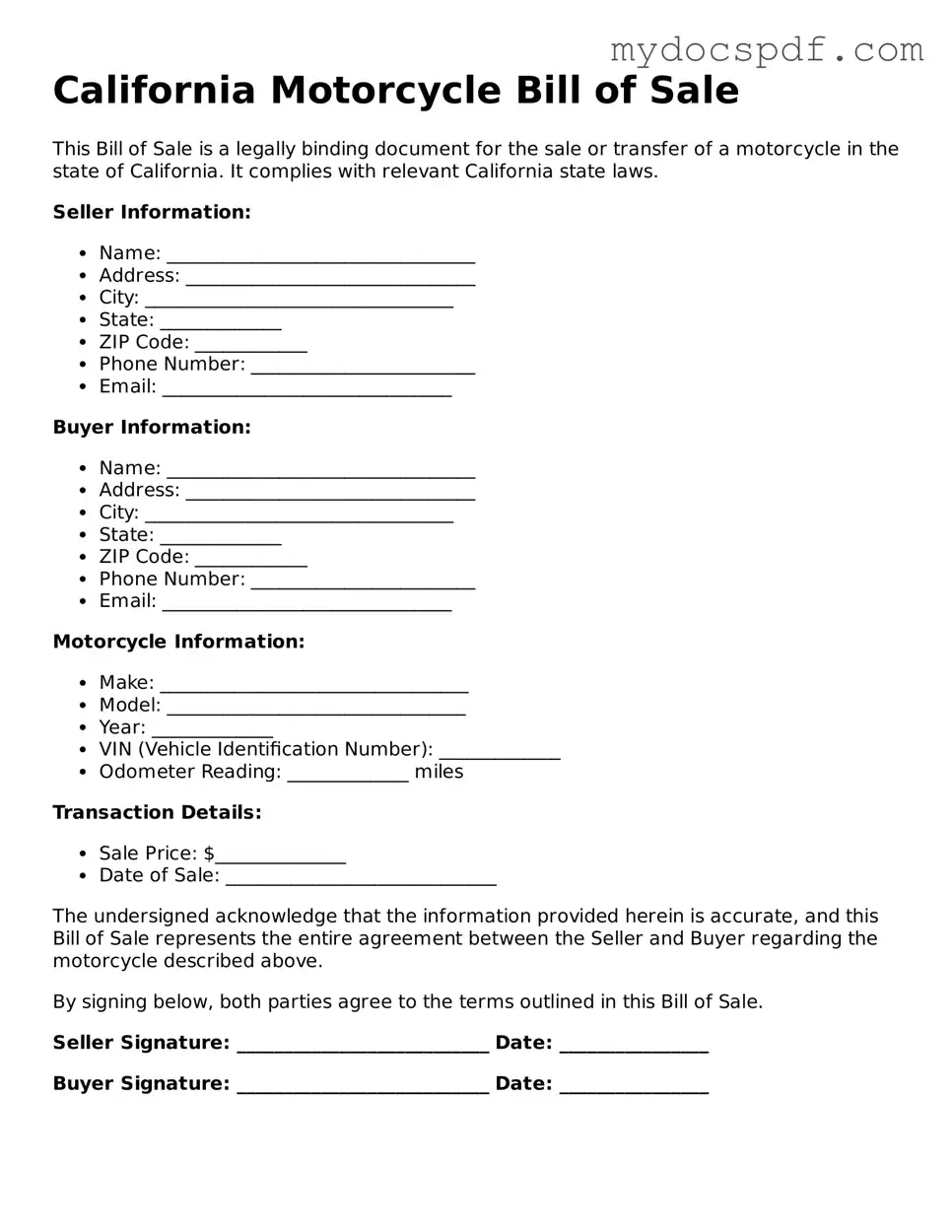California Motorcycle Bill of Sale
This Bill of Sale is a legally binding document for the sale or transfer of a motorcycle in the state of California. It complies with relevant California state laws.
Seller Information:
- Name: _________________________________
- Address: _______________________________
- City: _________________________________
- State: _____________
- ZIP Code: ____________
- Phone Number: ________________________
- Email: _______________________________
Buyer Information:
- Name: _________________________________
- Address: _______________________________
- City: _________________________________
- State: _____________
- ZIP Code: ____________
- Phone Number: ________________________
- Email: _______________________________
Motorcycle Information:
- Make: _________________________________
- Model: ________________________________
- Year: _____________
- VIN (Vehicle Identification Number): _____________
- Odometer Reading: _____________ miles
Transaction Details:
- Sale Price: $______________
- Date of Sale: _____________________________
The undersigned acknowledge that the information provided herein is accurate, and this Bill of Sale represents the entire agreement between the Seller and Buyer regarding the motorcycle described above.
By signing below, both parties agree to the terms outlined in this Bill of Sale.
Seller Signature: ___________________________ Date: ________________
Buyer Signature: ___________________________ Date: ________________
